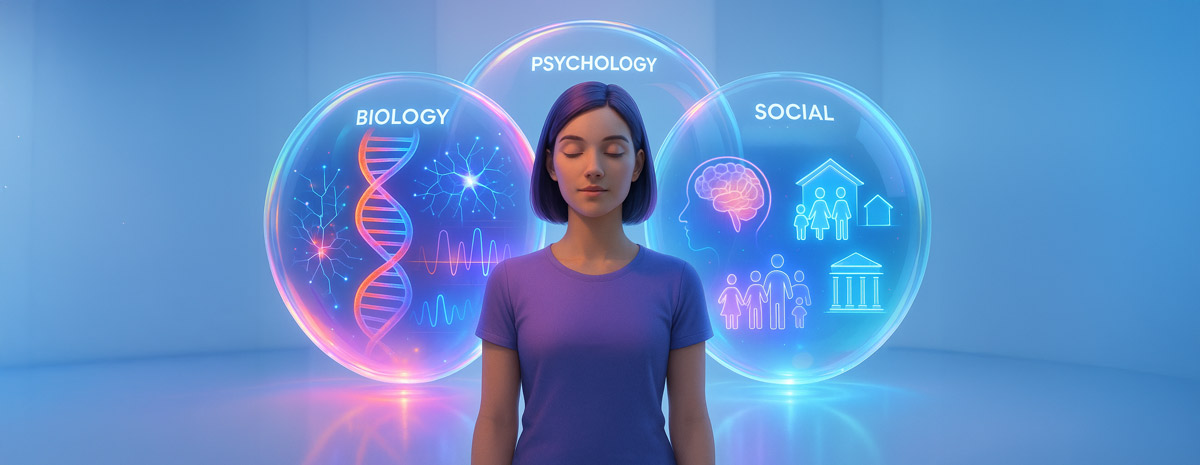Ketamine Integration: The Most Undervalued Phase of Ketamine Therapy

What Happens After the Medicine Wears Off?
Ketamine opens a door. But it’s what patients do with what they experience that defines long-term outcomes. That’s where integration comes in - the process of weaving insights, shifts, and emotional breakthroughs into the patient’s daily life.
Despite its importance, integration is often overlooked in traditional care models. Without it, the therapeutic potential of ketamine remains incomplete.
Why Integration Matters in Ketamine Therapy
Ketamine temporarily boosts neuroplasticity, increases emotional openness, and creates space for cognitive and behavioral flexibility. But that window is short-lived.
Without structured support, patients often:
- Feel emotionally raw or dysregulated
- Struggle to apply insights in real-world settings
- Fall back into familiar thought patterns or behavioral loops
Integration transforms momentary relief into meaningful, lasting change.
For a deeper dive, read our article: Ketamine Therapy and Metacognition
What Effective Integration Looks Like
There is no universal formula, but effective integration generally includes:
- Reflection: Processing what surfaced in the session
- Reinforcement: Anchoring new emotional and cognitive patterns
- Meaning-making: Connecting insights to real-life challenges or healing goals
- Practice: Implementing new behaviors, boundaries, or mental shifts
Together, these support a more regulated nervous system, stronger sense of agency, and deeper therapeutic value.
In one pilot at Massachusetts General Hospital, patients who received 4 ketamine sessions paired with 12 CBT-based integration sessions had a relapse rate of only 25% at 8 weeks—compared to 55–89% relapse in ketamine-only protocols. While this was a therapist-led model, it underscores a larger truth: structured integration—whether clinical or self-guided—helps sustain the gains.
Common Integration Gaps in Clinical Practice
While ketamine delivery protocols are well-established, integration protocols often remain vague or missing entirely. Some common gaps include:
- No formal follow-up or integration structure
- Limited support between sessions
- Lack of tools to help patients track insights and emotional shifts
- Concern over additional staffing requirements
This leaves many patients feeling lost, unsupported, or unsure how to make sense of what they experienced.
Integration and the Biopsychosocial Model
Integration isn’t just a bonus — it’s a core part of how ketamine therapy should work.
The biopsychosocial model, introduced by physician George Engel in 1977, was designed to move medicine beyond a purely biological focus. It recognizes that biological, psychological, and social factors all contribute to healing, especially in the realm of mental health.
In ketamine therapy, the biological intervention (the medicine itself) creates temporary neuroplasticity and openness. But without supporting the psychological (emotional processing, reflection) and social (behavioral reinforcement, therapeutic support) layers, patients may struggle to translate their experience into meaningful, lasting change.
A 2023 review in Psychological Medicine reaffirmed that modern biopsychosocial models “require psychological and social care to be interwoven with biological treatments” — especially in psychiatry, where outcomes are shaped by much more than brain chemistry alone.
Simply put: integration is the psychological and social bridge that helps the brain’s biological reset turn into real-world transformation.
For a deeper dive, read our article: The Biopsychosocial Model and Ketamine Therapy
How Limitless Supports Integration At Scale
Limitless ketamine therapy companion app was built specifically to help clinics offer high-impact support for ketamine therapy integration without increasing therapist hours.
Our platform delivers:
- Post-session audio reflections that guide emotional processing
- Daily microdoses for metacognitive skill-building
- In-session support to reduce anxiety and increase receptivity
- Progressive mindset tools that reinforce new patterns over time
Clinics using Limitless report:
- Better emotional regulation
- More consistent retention after session 3
- Stronger patient engagement and outcomes
Want to learn more?
Schedule a Discovery Call
How-To: Build Ketamine Integration Into Your Clinical Protocol
Creating an integration protocol doesn’t require a full therapy team. Here are five steps to get started:
1. Introduce Intention Setting Early
Have patients set a clear, personal intention before each session. This anchors meaning and gives the session direction.
2. Offer Guided Post-Session Reflections
Provide structured prompts or short visualizations to help patients organize and reflect on their insights.
3. Encourage Journaling or Audio Notes
Support patients in documenting what they noticed, learned, or want to carry forward.
4. Reinforce Small Wins Between Sessions
Check-in on mindset shifts or emotional regulation through text prompts or digital follow-up tools.
FAQs: Integration in Ketamine Therapy
Frequently asked questions about Ketamine Therapy integration.
Integration is the process of making sense of and applying insights from a ketamine session to one’s everyday life.
Ideally, integration continues for several days to weeks post-session, especially within the first 48 hours of heightened neuroplasticity.
Yes. Integration can be supported with self-guided tools like journaling, audio prompts, and structured reflections.
Absolutely. Integration reflects the psychological and social layers needed to support biological intervention
Limitless delivers scalable, tech-enabled, ketamine therapy integration support.
Yes, feeling better doesn’t guarantee lasting change. Integration helps consolidate and extend those early gains.
Look for consistent insights, reduced emotional reactivity, and the ability to link experiences to personal growth.
Yes! Some ketamine clinics have reported to us that they recommend patients use the Chill Music channel as a cue for patients to listen to when at home, journaling, taking gentle walks, meditating and practicing relaxation.
Final Thoughts
Final Thought: Integration Turns Relief Into Resilience
The session is only the beginning. If ketamine opens the mind, integration teaches it how to grow.Let’s make it part of the standard.
Schedule a discovery call with our team to explore how your clinic can integrate smarter.
How To Integrate Limitless App Into Your Practice
Whether you're exploring mindset support for the first time or ready to roll it out across your treatment rooms, we’ve made it simple to begin. Each kit is designed to help your team introduce Limitless with ease.
Kit
1-Month License
for Patients
for Patients








